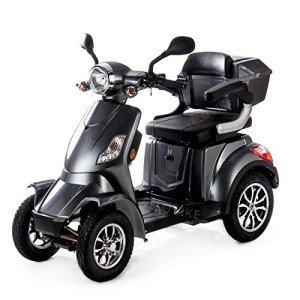15 Reasons You Must Love Mobility Scooter
Mobility Scooters: A Comprehensive Guide
Mobility scooters have ended up being an essential mode of transportation for lots of individuals facing mobility challenges. This short article explores the numerous elements of mobility scooters, including their types, advantages, functions, and a guide for potential purchasers.
Understanding Mobility Scooters
Mobility scooters are electrically powered devices designed for people with limited mobility. They supply a means of transport for people who might have problem walking but still desire to keep their self-reliance. They are available in various designs and functions to cater to a broad variety of needs.
Types of Mobility Scooters
Mobility scooters can generally be classified into 3 main types:
Type
Description
Best For
Compact Scooters
These are small and lightweight, ideal for indoors and short trips.
Users with limited storage space or those who travel typically.
Mid-size Scooters
A balance in between portability and stability, suitable for both indoor and outside use.
Those who require to cover a variety of terrains.
Sturdy Scooters
Large and robust, designed for rugged outside use and much heavier individuals.
Users needing additional weight capacity or going off-road.
Key Features of Mobility Scooters
The option of mobility scooter typically depends on the features that align with individual needs. Here are a few of the key features to think about:
Weight Capacity: Mobility scooters include various weight limitations. It is vital to select a scooter that can adequately support the user's weight.
Variety: The range a scooter can take a trip on a single charge differs. Depending upon user requirements, one may choose for scooters with a range of up to 40 miles.
Speed: Most mobility scooters can reach speeds between 4 to 8 miles per hour. Consider what speed is comfortable and safe for the intended environment.
Turning Radius: A compact turning radius is necessary for indoor usage, enabling easier navigation in tight spaces.
Battery Type: The type of batteries used can impact the scooter's efficiency. Lead- codysprunk.top and lithium-ion batteries are the most typical.
Benefits of Using Mobility Scooters
The benefits of mobility scooters extend beyond simply transportation. Some essential advantages include:
Independence: Users can browse their environment without relying on caregivers, promoting self-reliance and self-confidence.
Health Benefits: Using a scooter can encourage outdoor activity, causing physical and psychological health improvements by reducing feelings of seclusion.
Convenience: Scooters can easily be operated in different environments, whether inside your home, in shopping center, or outdoors.
Important Considerations When Buying a Mobility Scooter
When acquiring a mobility scooter, a number of considerations can assist make sure that you choose the best design:
Assess Individual Needs:
- Mobility level: Consider just how much help the individual will need.
- Range of usage: Determine where the scooter will primarily be used (inside your home, outdoors, on rough surfaces, etc).
Test Drive:
- Always test drive several designs to find an appropriate fit. Focus on comfort, ease of steering, and the scooter's responsiveness.
Evaluation Safety Features:
- Look for scooters with adequate safety functions like lights, indicators, and anti-tip styles.
Inspect Warranty and Service Options:
- A trustworthy guarantee and available service options are important for long-lasting use.
Frequently Asked Questions about Mobility Scooters
**1. How quick do mobility scooters go?Mobility scooters usually have speeds ranging from 4 to 8 mph, with a lot of created for security instead of high-speed travel. 2. Are there weight constraints on mobility scooters?Yes, mobility
scooters feature particular weight limitations, frequently varying from
250 pounds to over 500 pounds, depending on the design. 3. Can mobility scooters be utilized indoors?Certain models, particularly compact scooters, are particularly created for
**indoor use and are much easier to navigate in tight spaces. 4. How frequently do the batteries need to be replaced?Battery life can differ based on use, however typically, with correct care, batteries might last between 1 to 3 years before requiring replacement
**. 5. Are mobility scooters covered by insurance?Coverage can differ, but some insurance coverage plans, consisting of Medicare and Medicaid, may cover part of the cost. It's recommended to consult private insurance providers. Mobility scooters function as a
important tool for numerous individuals, enabling them to preserve
their freedom and independence. By understanding the different types and features of mobility scooters, individuals can make informed decisions customized to their specific needs.
Whether used for errands, socializing, or leisurely activities, mobility scooters can improve the lifestyle for those with mobility restrictions. Investing in a mobility scooter is a choice that can substantially affect a person's daily life. For that reason, individuals should carefully evaluate their alternatives and choose a model that best lines up with their lifestyle and mobility requirements
.  ******
******